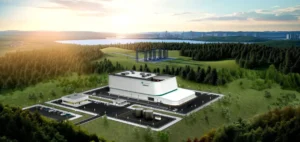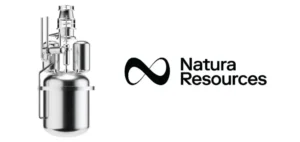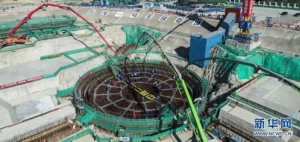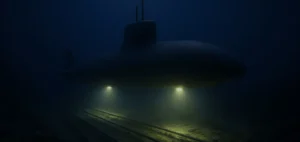Argentine President Javier Milei has announced his ambition to develop new nuclear infrastructure to address growing energy demands, which saw a 9% contribution from nuclear sources in 2024. This announcement, made alongside Rafael Grossi, Director of the International Atomic Energy Agency (IAEA), has sparked criticism about its feasibility.
A Modular Nuclear Reactor Project
Javier Milei’s strategy focuses on constructing a small modular reactor (SMR) at the Atucha site near Buenos Aires. SMRs, which provide simplified and flexible solutions, are being developed globally. According to the IAEA, this technology is already operational in Russia and is the subject of similar projects in Canada, China, and the United States.
The president emphasized that the project is vital to meet the demands of rapidly growing sectors like artificial intelligence. “Nuclear energy is the only source capable of addressing this demand quickly and efficiently,” he stated.
Criticism of Existing Project Management
The announcement has been labeled “contradictory” by Adriana Serquis, former president of the National Atomic Energy Commission (CNEA). She pointed out the existence of the CAREM project, a modular reactor designed and built in Argentina. This project, recognized as one of the most advanced worldwide, has been stalled since Javier Milei took office in 2023 due to significant budget cuts.
These critiques are echoed by Diego Hurtado, former Secretary of Scientific Planning. According to him, reduced budgets for science and technology have slowed the CAREM project to the point of being “practically at a standstill.” This reactor was initially slated to become operational in 2028.
Economic and Budgetary Context
Argentina’s budgetary constraints add complexity to these nuclear ambitions. As part of his program, nicknamed “chainsaw,” Javier Milei has implemented drastic public spending cuts, including the elimination of over 30,000 public sector jobs. Employees of the CNEA, whose purchasing power decreased by 30% in 2024, are particularly affected.
These financial restrictions could hinder Argentina’s ability to simultaneously advance new energy projects while reviving those already initiated. Nevertheless, President Milei, seeking international investments, is banking on nuclear technology’s appeal to help boost the country’s energy economy.
Political and Economic Stakes
Javier Milei’s decision to invest in nuclear energy reflects a strategic move to position Argentina as a key energy player. However, the project’s realization depends on adequate funding and effective resource coordination.
Argentina’s energy future remains uncertain, caught between political ambitions and budgetary constraints. The modular reactor project at Atucha is part of a long-term vision, but doubts persist regarding its immediate feasibility.






















